Abstract
OBJECTIVE: To compare assisted living residents and nursing home residents on outcome trajectories for three outcomes: ability to perform activities of daily living (ADLs), psychological well-being, and pain and discomfort. DATA SOURCES/STUDY SETTING: A representative sample of one-third of the census from 38 participating assisted living facilities (N = 605) and two-fifths of the census from 31 participating nursing facilities (N = 610). STUDY DESIGN: A longitudinal design using hierarchical linear models to examine how setting (being in an assisted living setting or in a nursing home) affected growth trajectories for each outcome studied when adjusting for other resident characteristics. DATA COLLECTION: Residents or their proxies were interviewed and chart reviews done at baseline, six months, and one year. All baseline data were collected between August 1995 and May 1996. PRINCIPAL FINDINGS: We found differences in case mix between assisted living and nursing facility residents but no differences in outcome trajectories for ADLs, psychological well-being, and pain and discomfort. For ADLs and pain and discomfort on average, residents in both settings experienced change over the study period. For psychological well-being, residents experienced no change on average. CONCLUSIONS: The lack of difference in growth trajectories for ADLs, pain and discomfort, and psychological well-being between the two settings was noteworthy.
Full text
PDF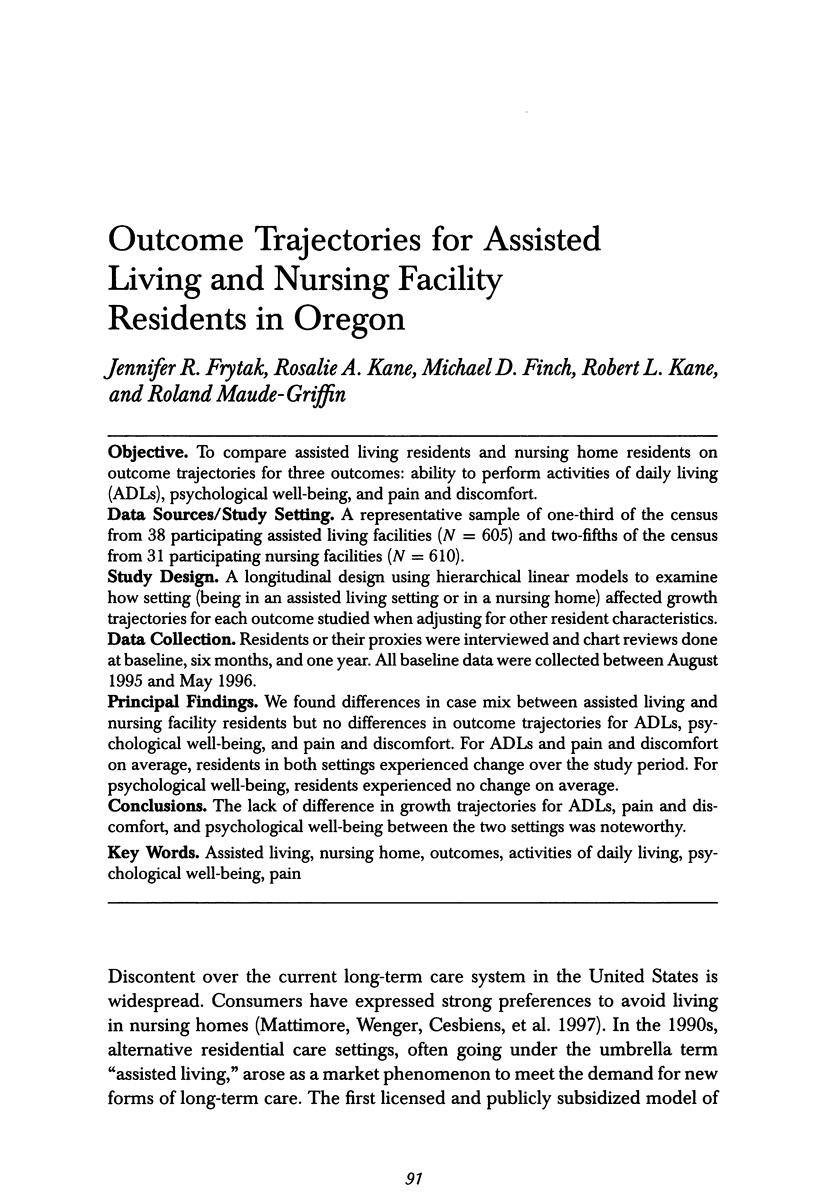
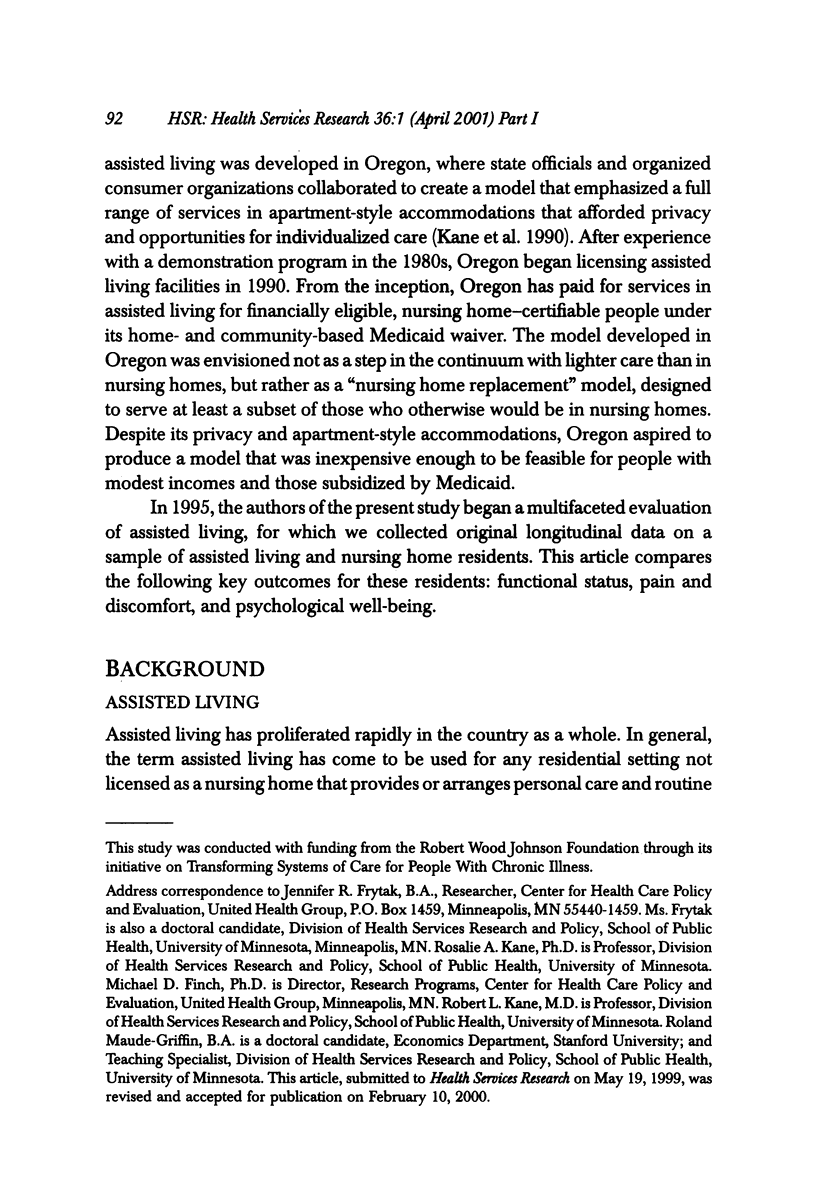
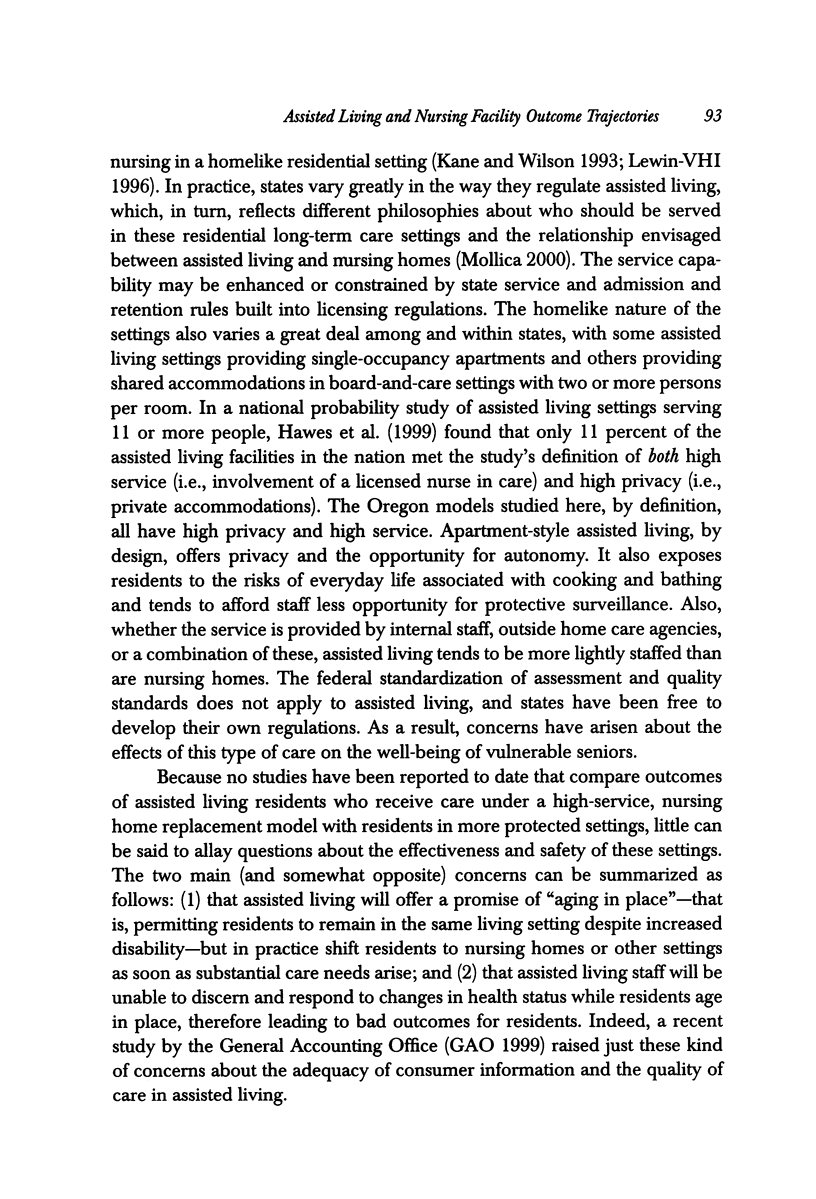
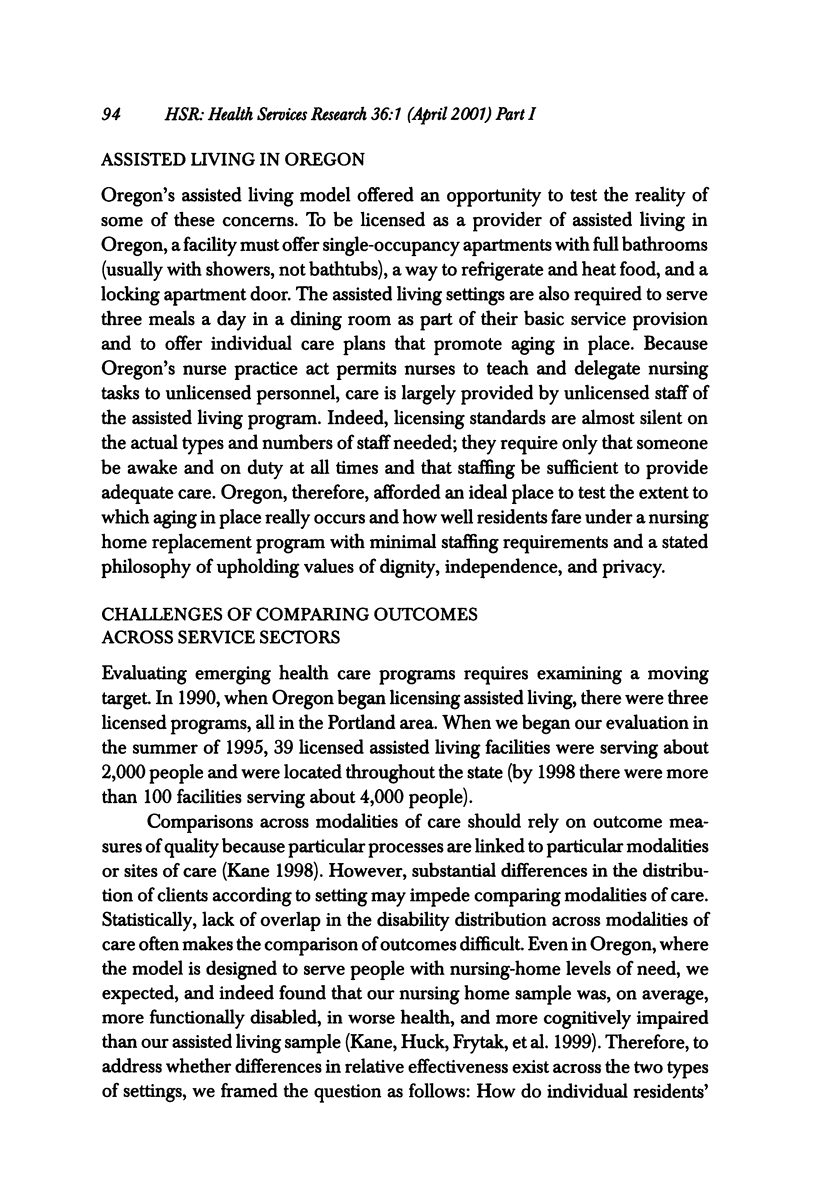
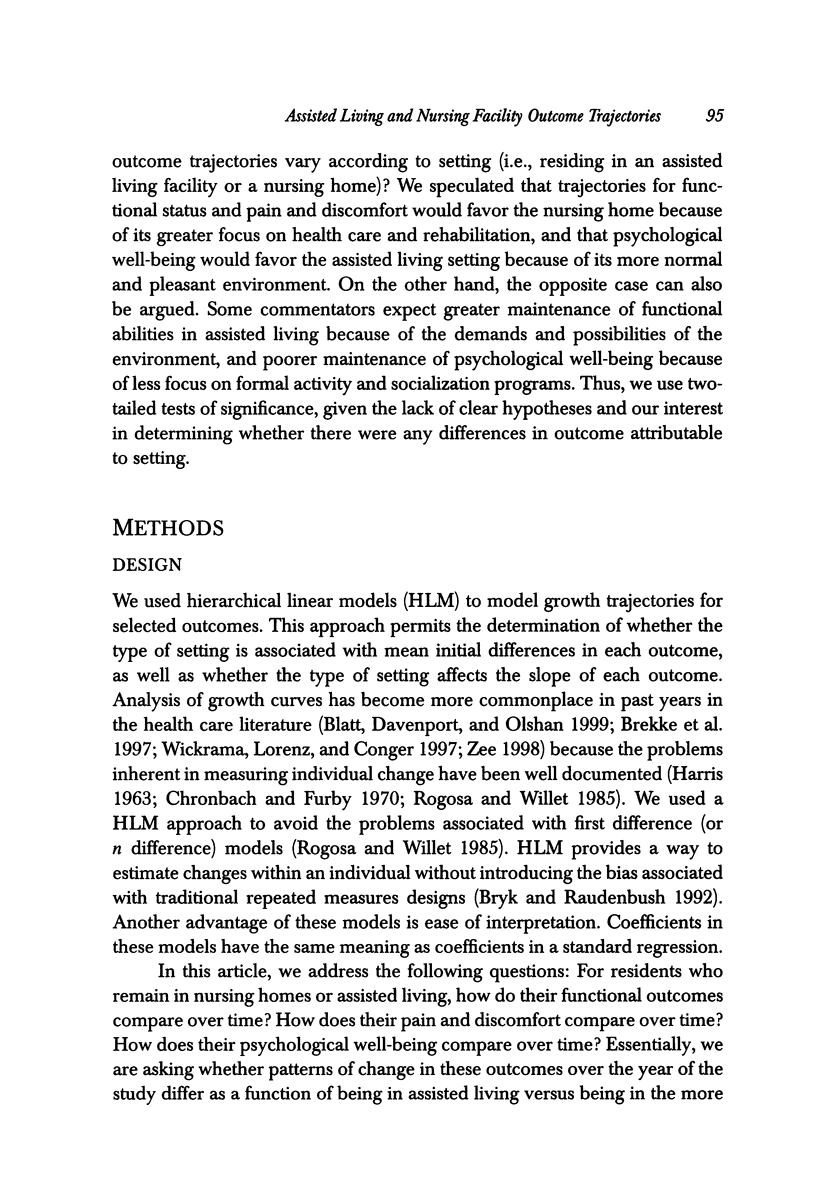
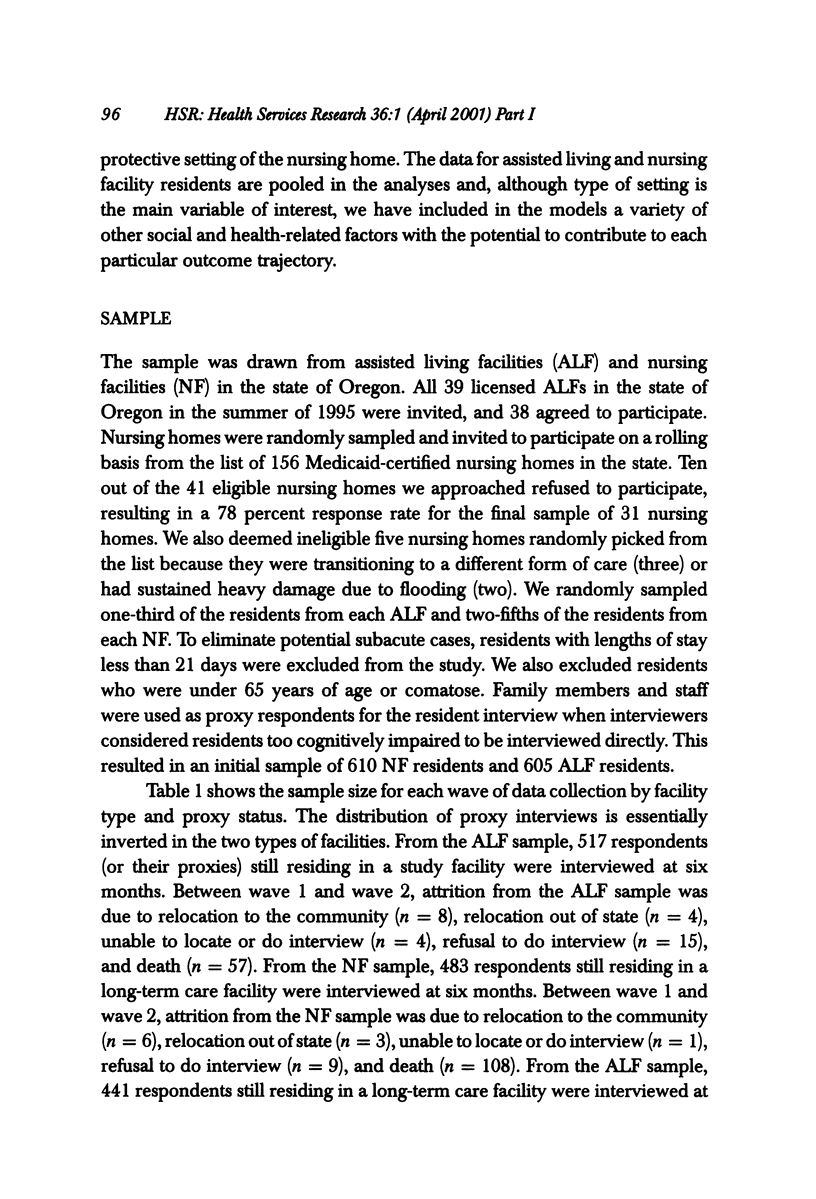
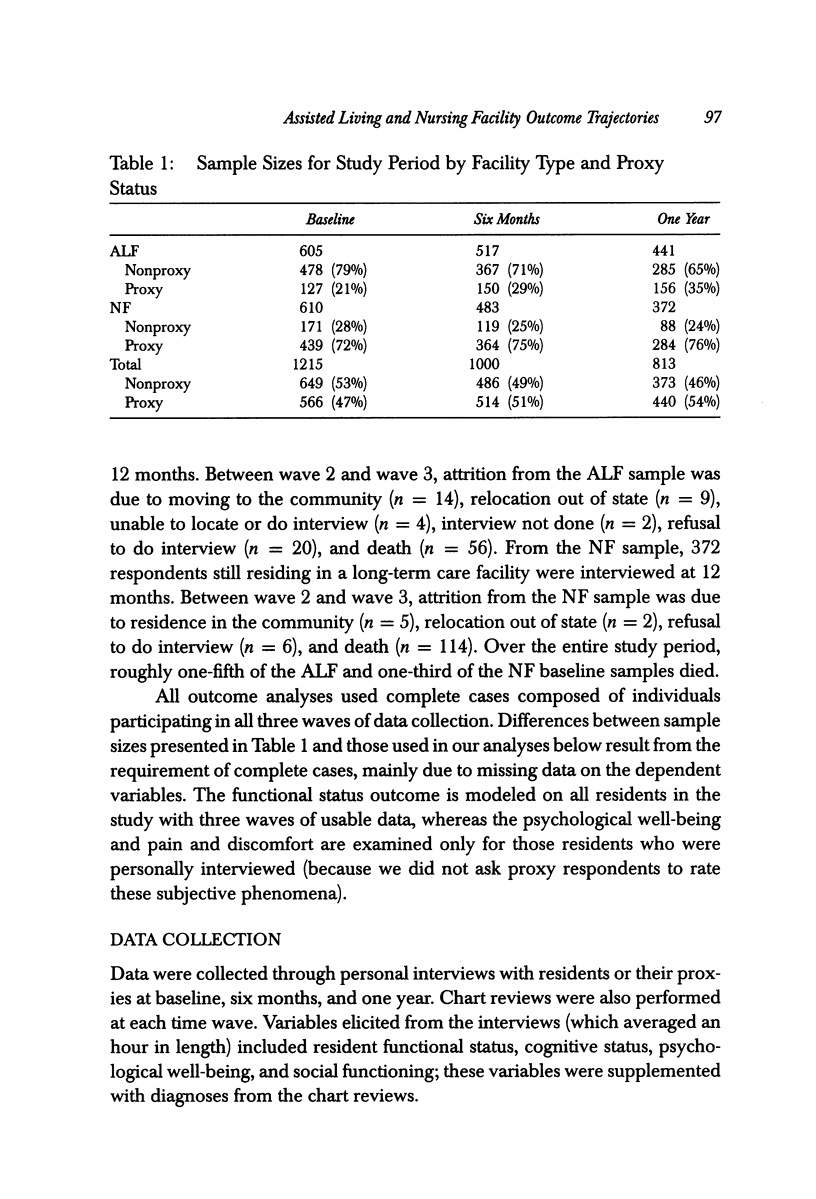
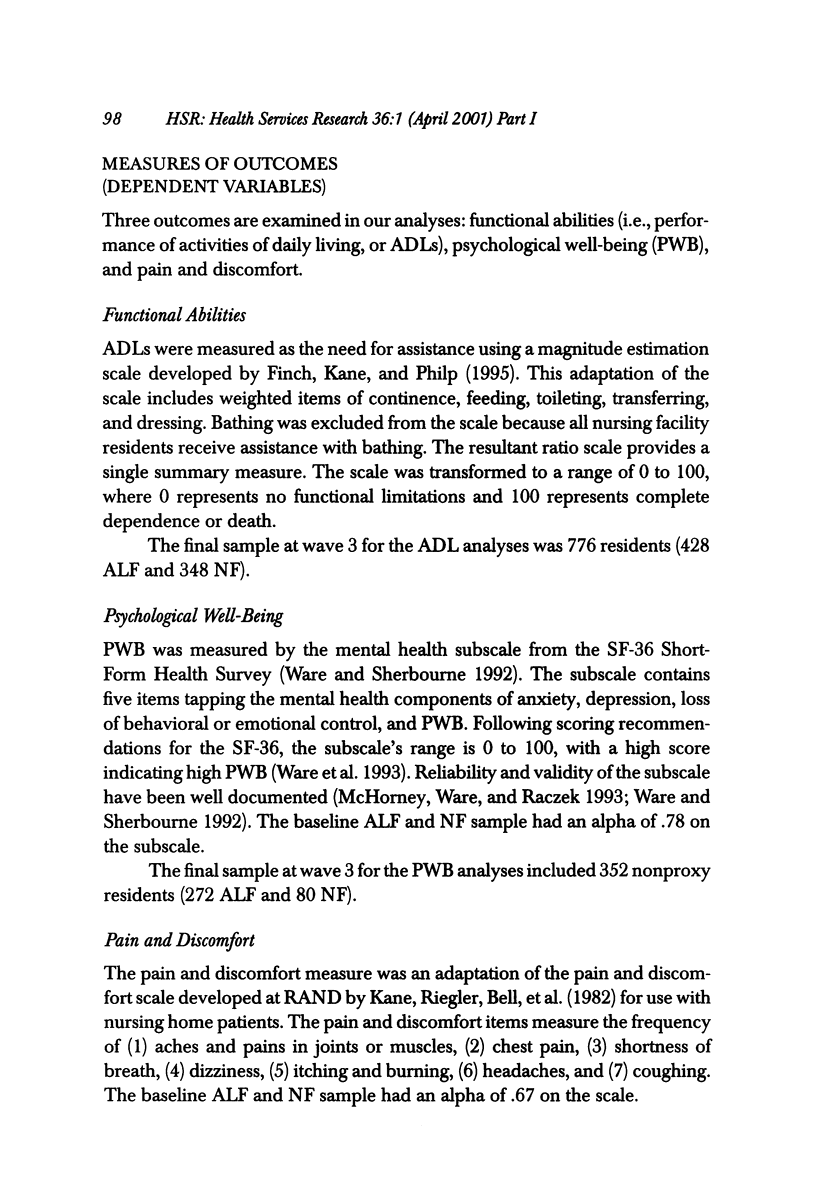
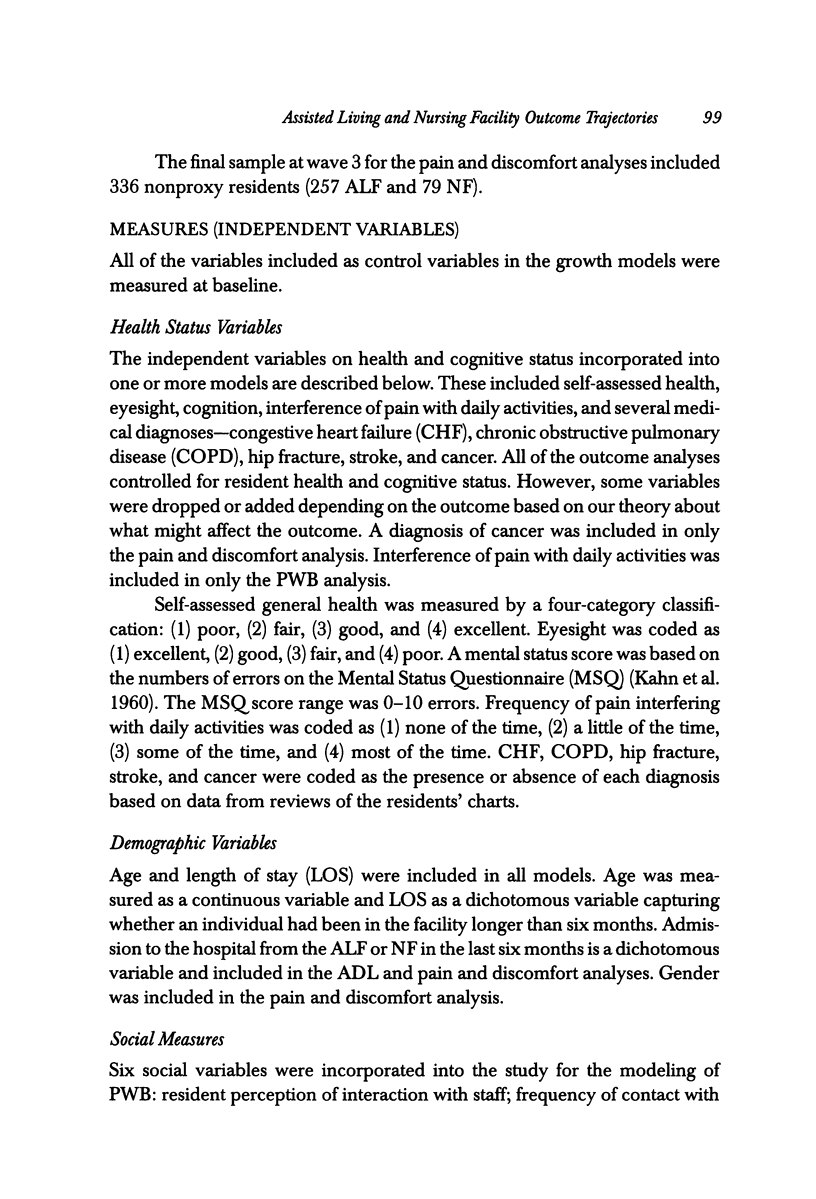
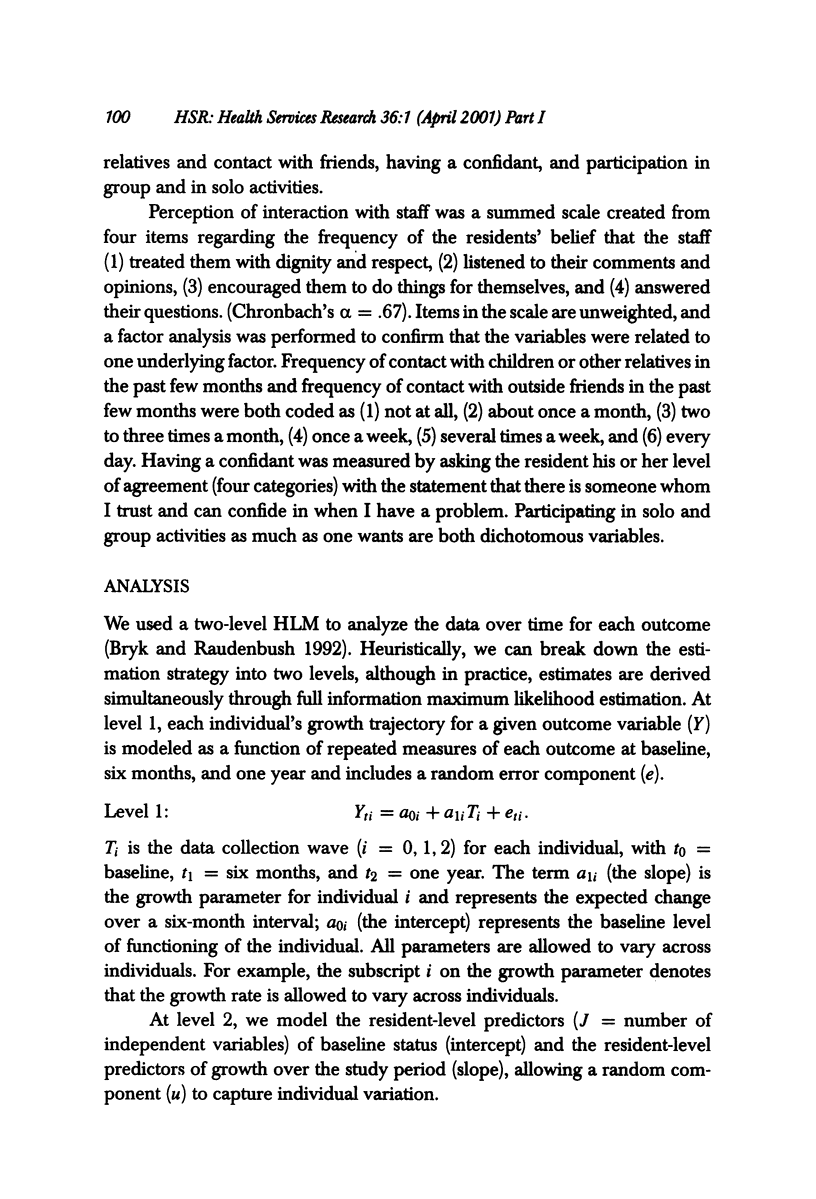
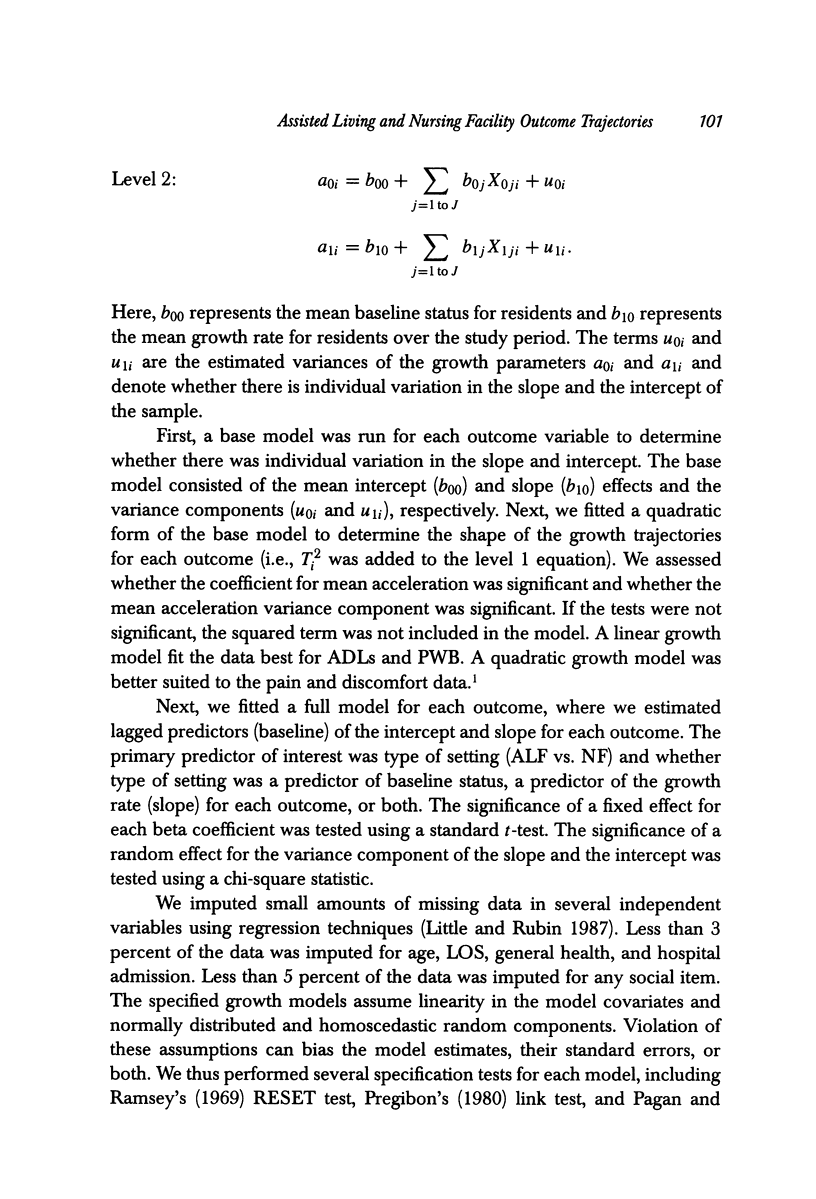
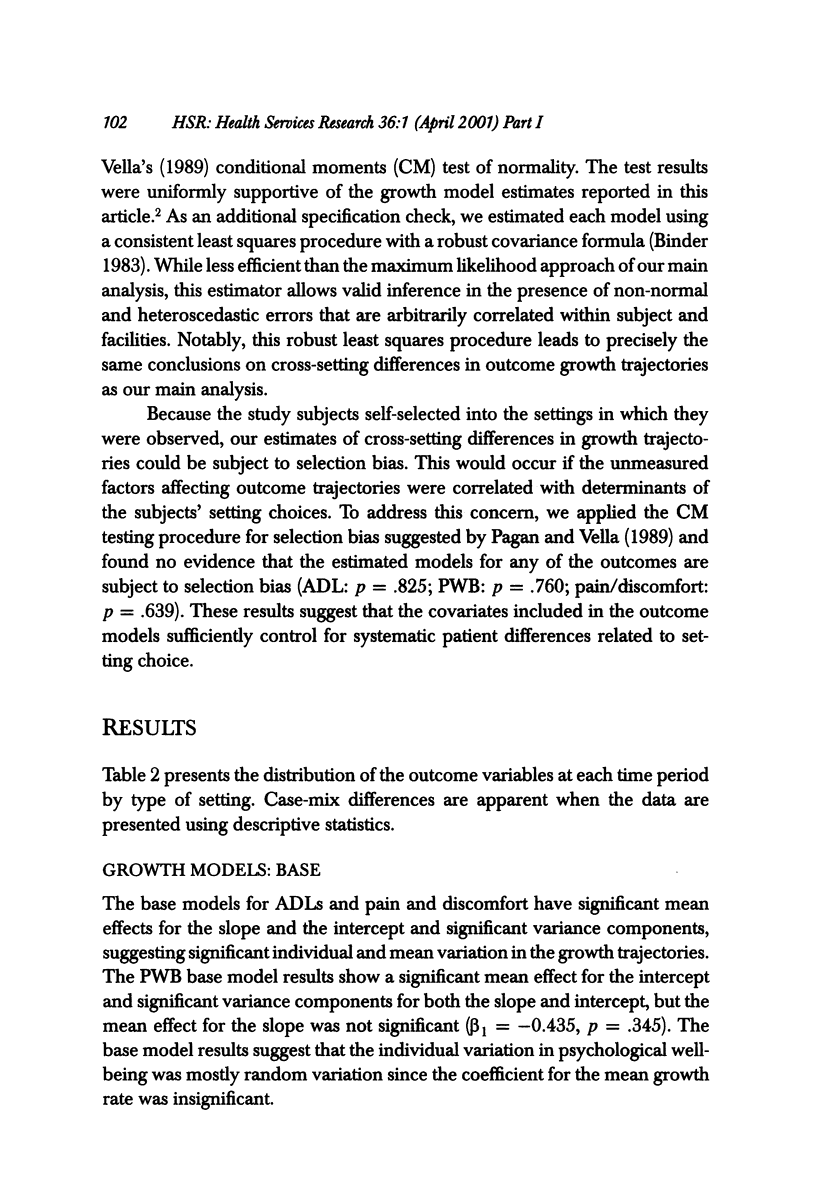
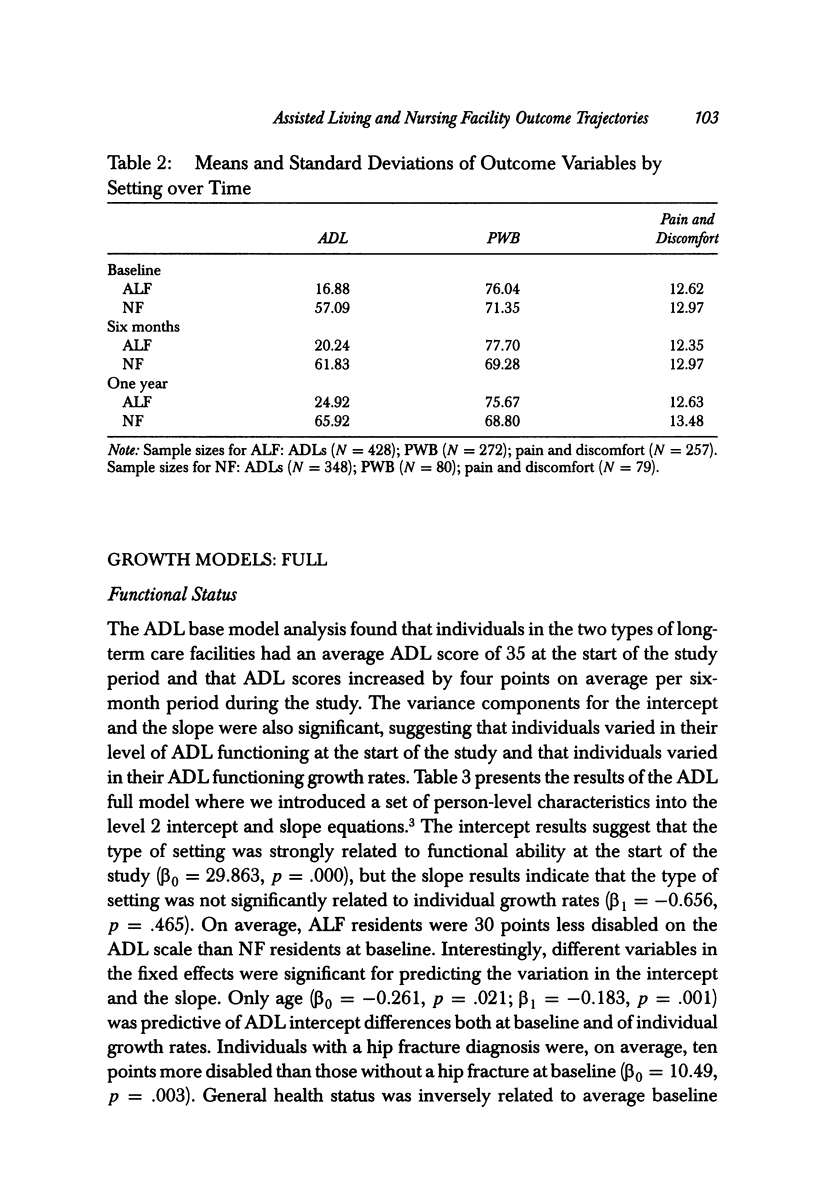
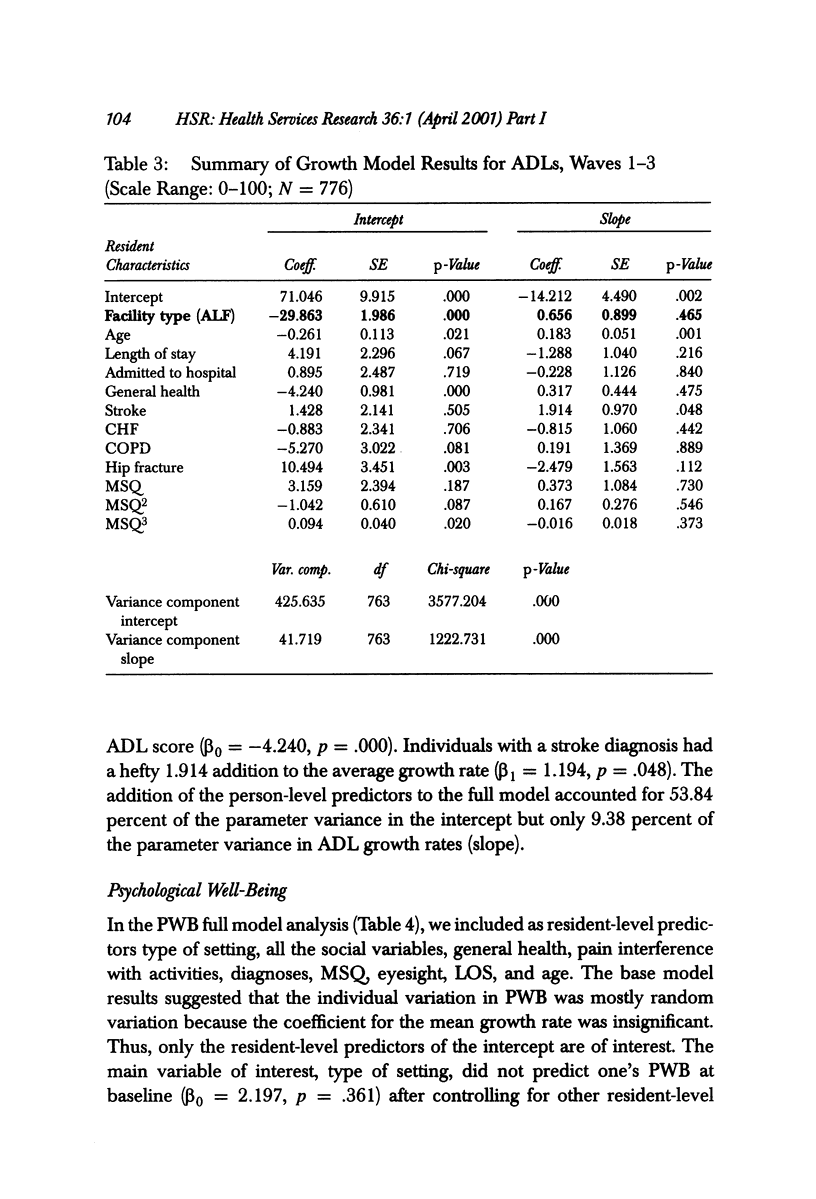
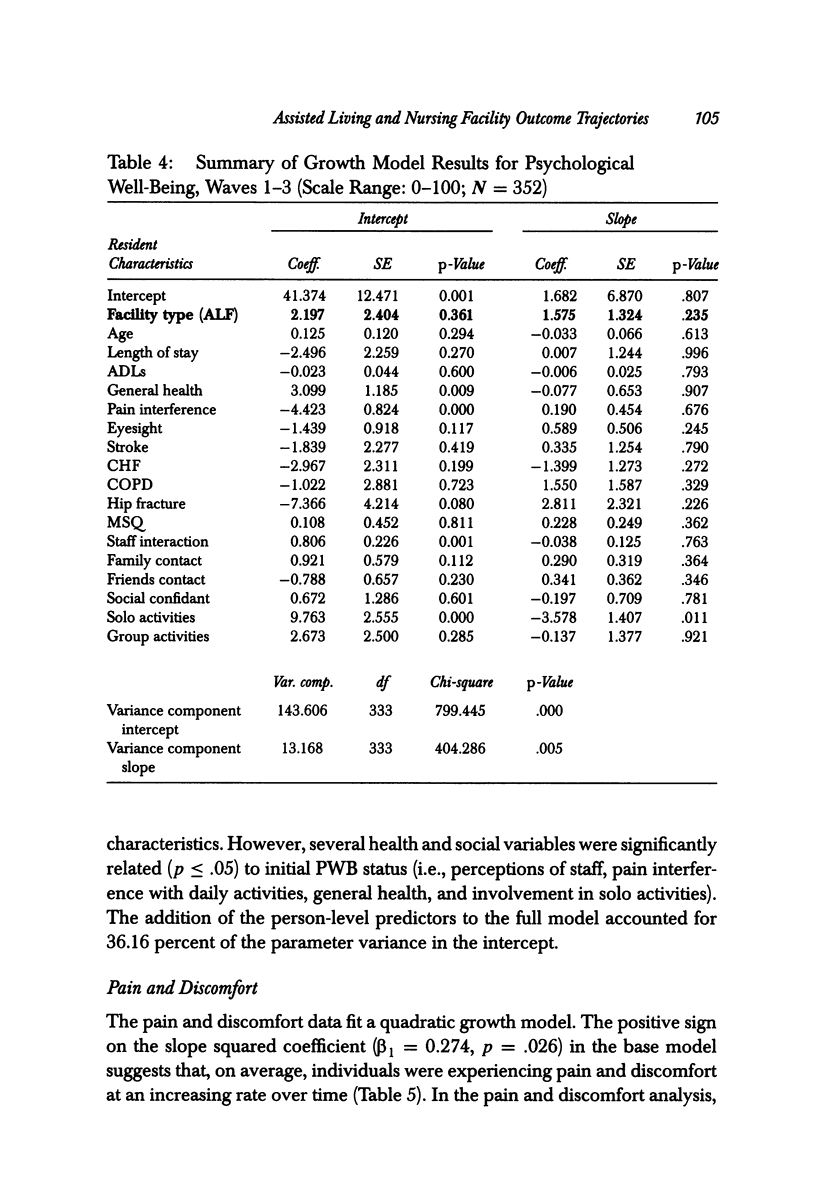
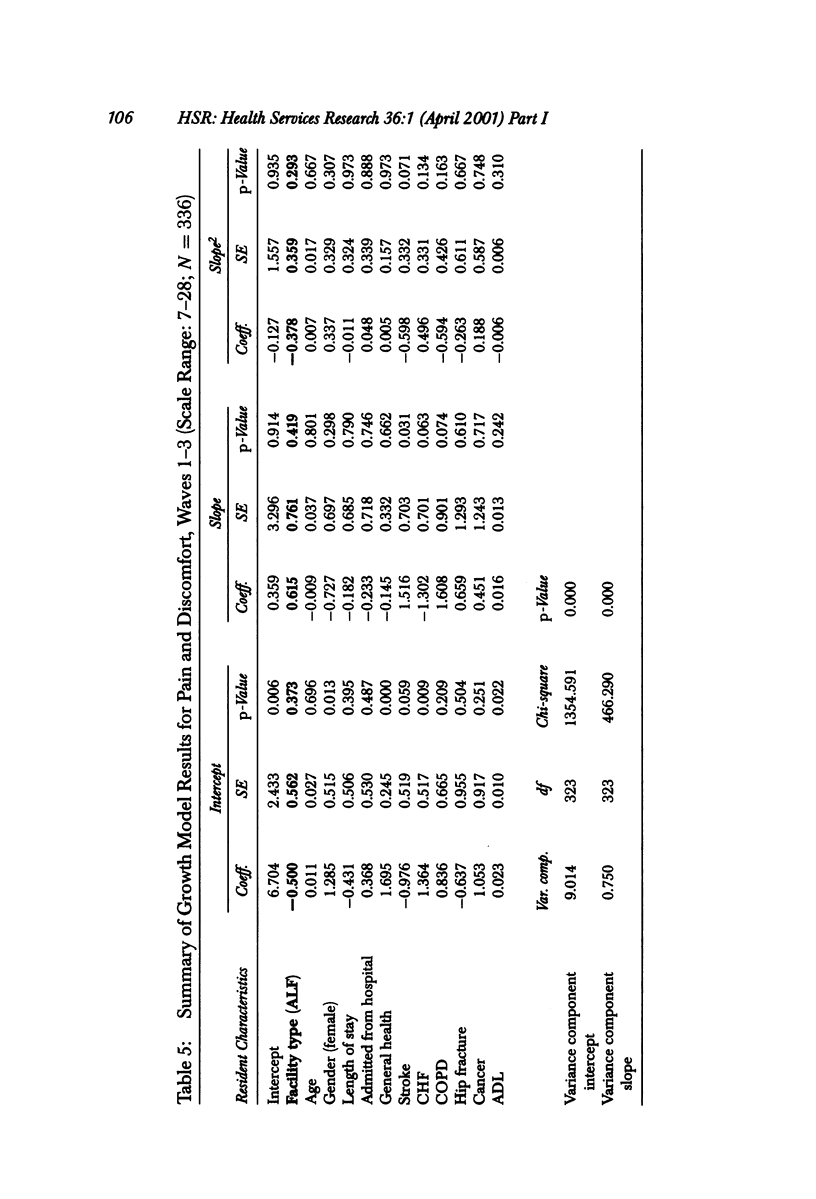
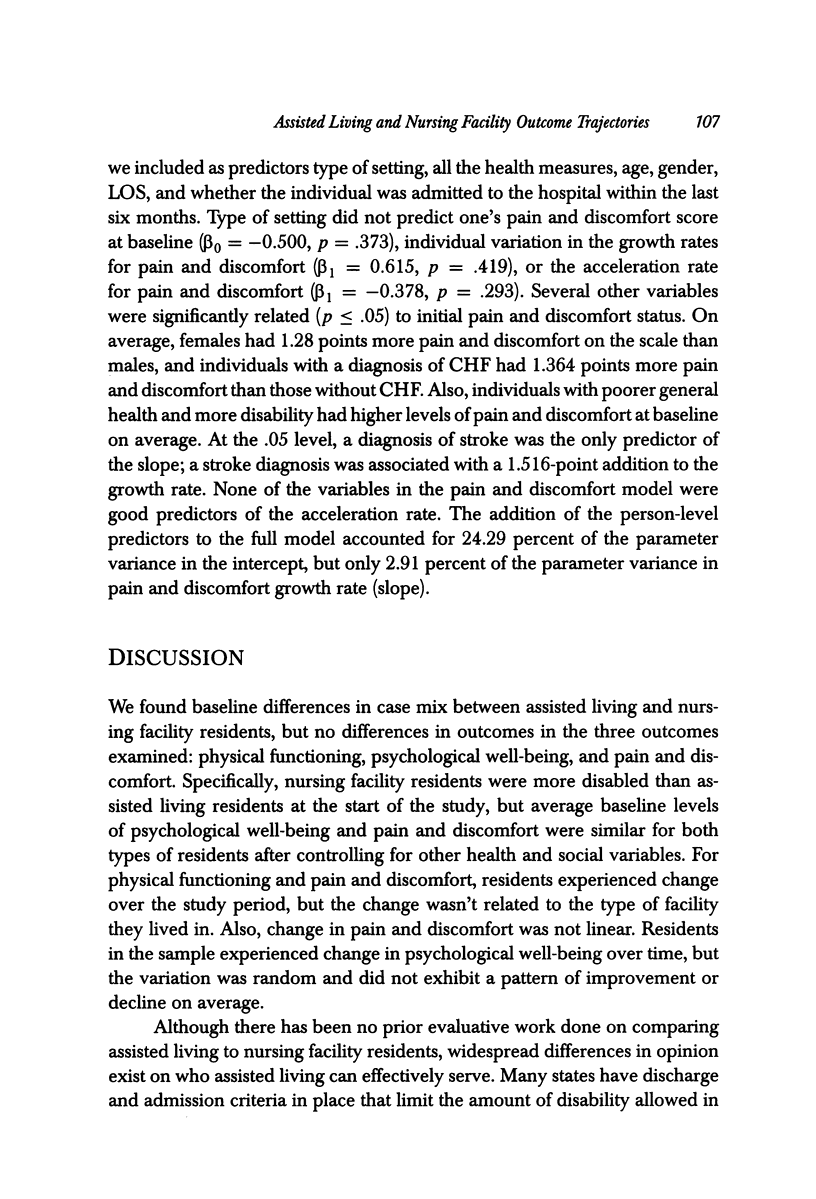
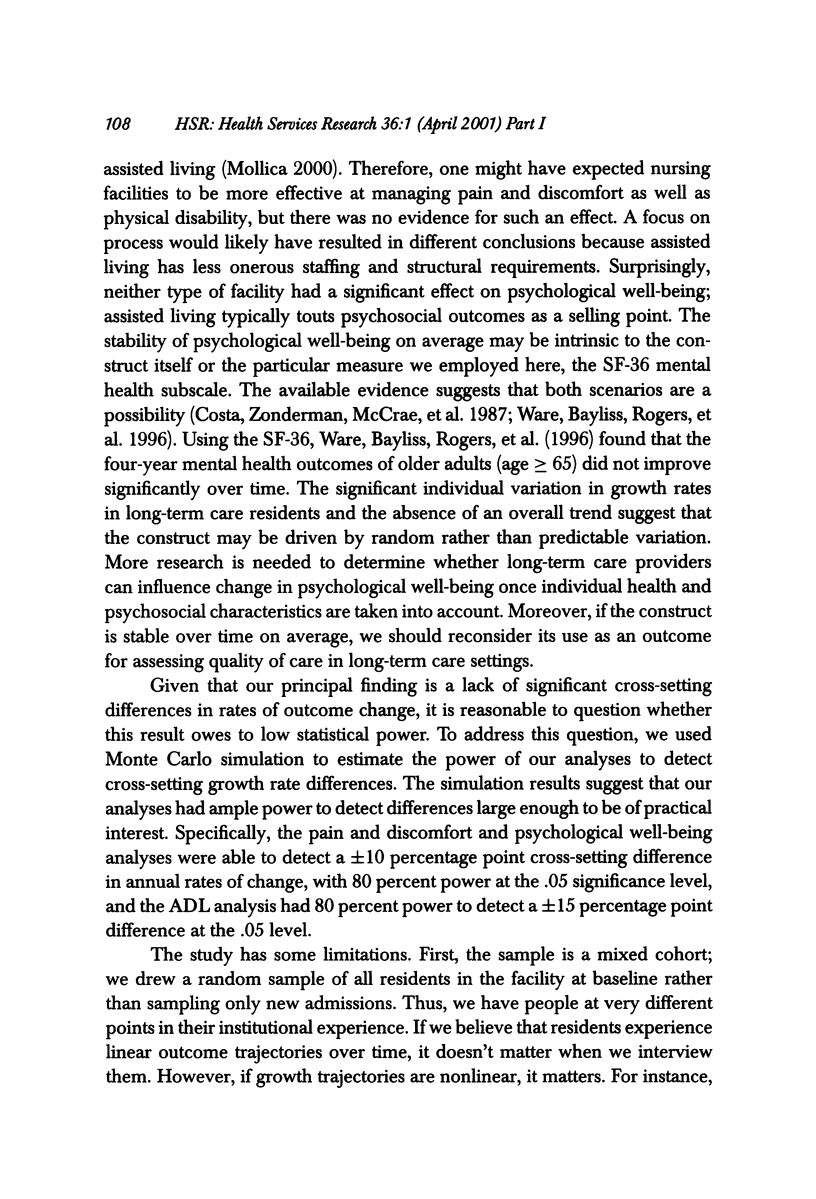
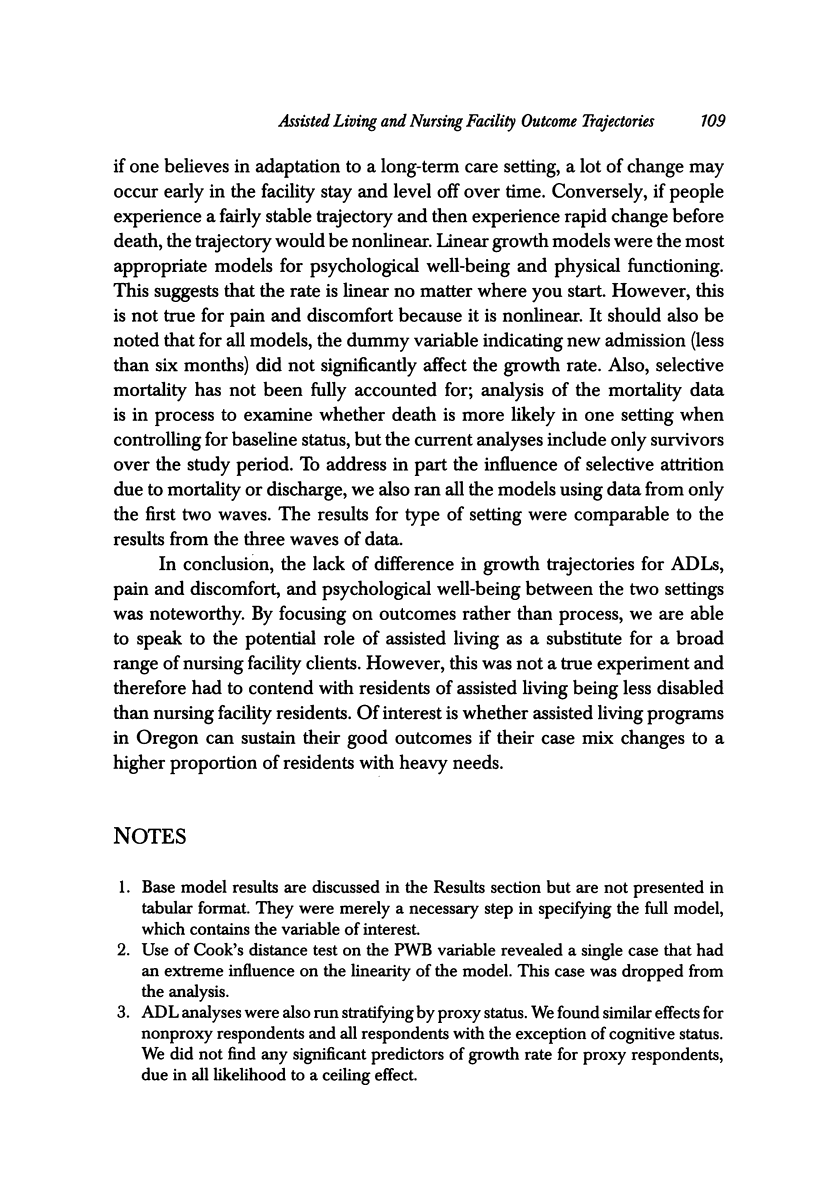
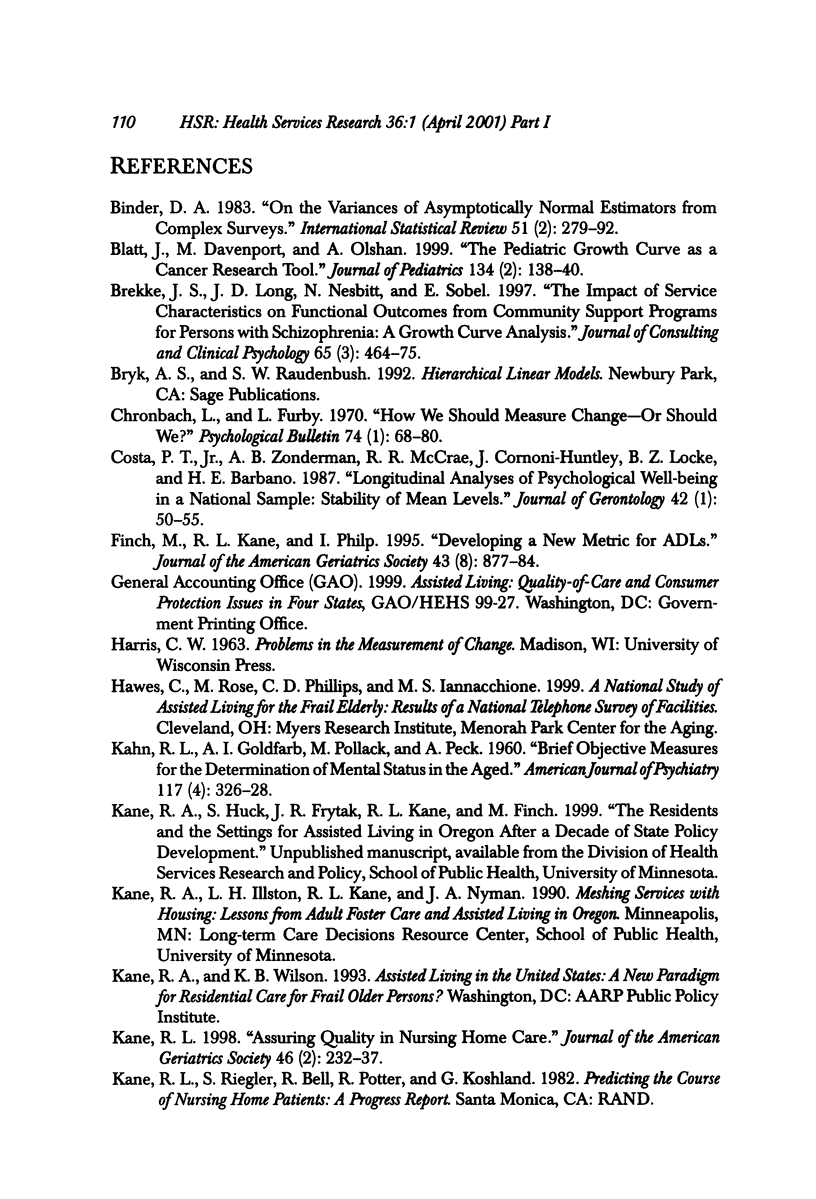
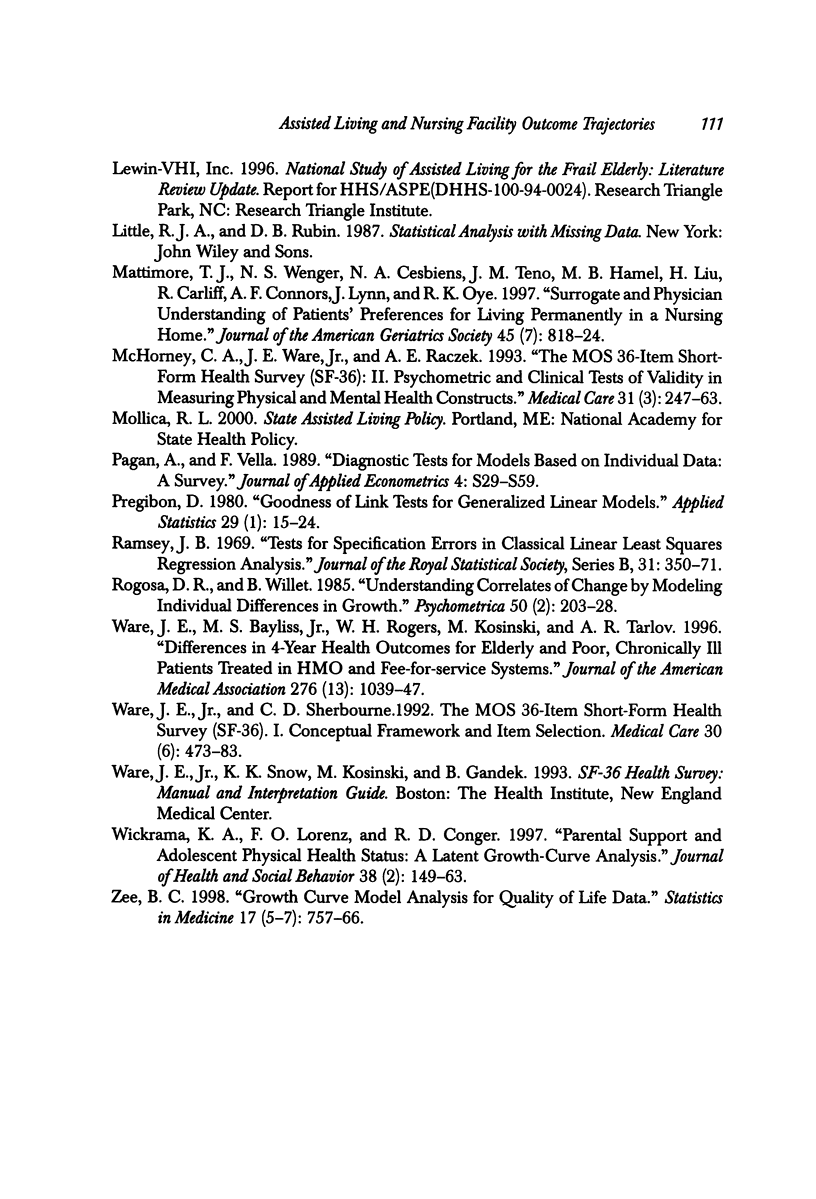
Selected References
These references are in PubMed. This may not be the complete list of references from this article.
- Blatt J., Davenport M., Olshan A. The pediatric growth curve as a cancer research tool. J Pediatr. 1999 Feb;134(2):138–140. doi: 10.1016/s0022-3476(99)70404-x. [DOI] [PubMed] [Google Scholar]
- Brekke J. S., Long J. D., Nesbitt N., Sobel E. The impact of service characteristics on functional outcomes from community support programs for persons with schizophrenia: a growth curve analysis. J Consult Clin Psychol. 1997 Jun;65(3):464–475. doi: 10.1037//0022-006x.65.3.464. [DOI] [PubMed] [Google Scholar]
- Costa P. T., Jr, Zonderman A. B., McCrae R. R., Cornoni-Huntley J., Locke B. Z., Barbano H. E. Longitudinal analyses of psychological well-being in a national sample: stability of mean levels. J Gerontol. 1987 Jan;42(1):50–55. doi: 10.1093/geronj/42.1.50. [DOI] [PubMed] [Google Scholar]
- Finch M., Kane R. L., Philp I. Developing a new metric for ADLs. J Am Geriatr Soc. 1995 Aug;43(8):877–884. doi: 10.1111/j.1532-5415.1995.tb05530.x. [DOI] [PubMed] [Google Scholar]
- KAHN R. L., GOLDFARB A. I., POLLACK M., PECK A. Brief objective measures for the determination of mental status in the aged. Am J Psychiatry. 1960 Oct;117:326–328. doi: 10.1176/ajp.117.4.326. [DOI] [PubMed] [Google Scholar]
- Kane R. L. Assuring quality in nursing home care. J Am Geriatr Soc. 1998 Feb;46(2):232–237. doi: 10.1111/j.1532-5415.1998.tb02545.x. [DOI] [PubMed] [Google Scholar]
- Mattimore T. J., Wenger N. S., Desbiens N. A., Teno J. M., Hamel M. B., Liu H., Califf R., Connors A. F., Jr, Lynn J., Oye R. K. Surrogate and physician understanding of patients' preferences for living permanently in a nursing home. J Am Geriatr Soc. 1997 Jul;45(7):818–824. doi: 10.1111/j.1532-5415.1997.tb01508.x. [DOI] [PubMed] [Google Scholar]
- McHorney C. A., Ware J. E., Jr, Raczek A. E. The MOS 36-Item Short-Form Health Survey (SF-36): II. Psychometric and clinical tests of validity in measuring physical and mental health constructs. Med Care. 1993 Mar;31(3):247–263. doi: 10.1097/00005650-199303000-00006. [DOI] [PubMed] [Google Scholar]
- Ware J. E., Jr, Bayliss M. S., Rogers W. H., Kosinski M., Tarlov A. R. Differences in 4-year health outcomes for elderly and poor, chronically ill patients treated in HMO and fee-for-service systems. Results from the Medical Outcomes Study. JAMA. 1996 Oct 2;276(13):1039–1047. [PubMed] [Google Scholar]
- Ware J. E., Jr, Sherbourne C. D. The MOS 36-item short-form health survey (SF-36). I. Conceptual framework and item selection. Med Care. 1992 Jun;30(6):473–483. [PubMed] [Google Scholar]
- Wickrama K. A., Lorenz F. O., Conger R. D. Parental support and adolescent physical health status: a latent growth-curve analysis. J Health Soc Behav. 1997 Jun;38(2):149–163. [PubMed] [Google Scholar]
- Zee B. C. Growth curve model analysis for quality of life data. 1998 Mar 15-Apr 15Stat Med. 17(5-7):757–766. doi: 10.1002/(sici)1097-0258(19980315/15)17:5/7<757::aid-sim819>3.0.co;2-n. [DOI] [PubMed] [Google Scholar]


